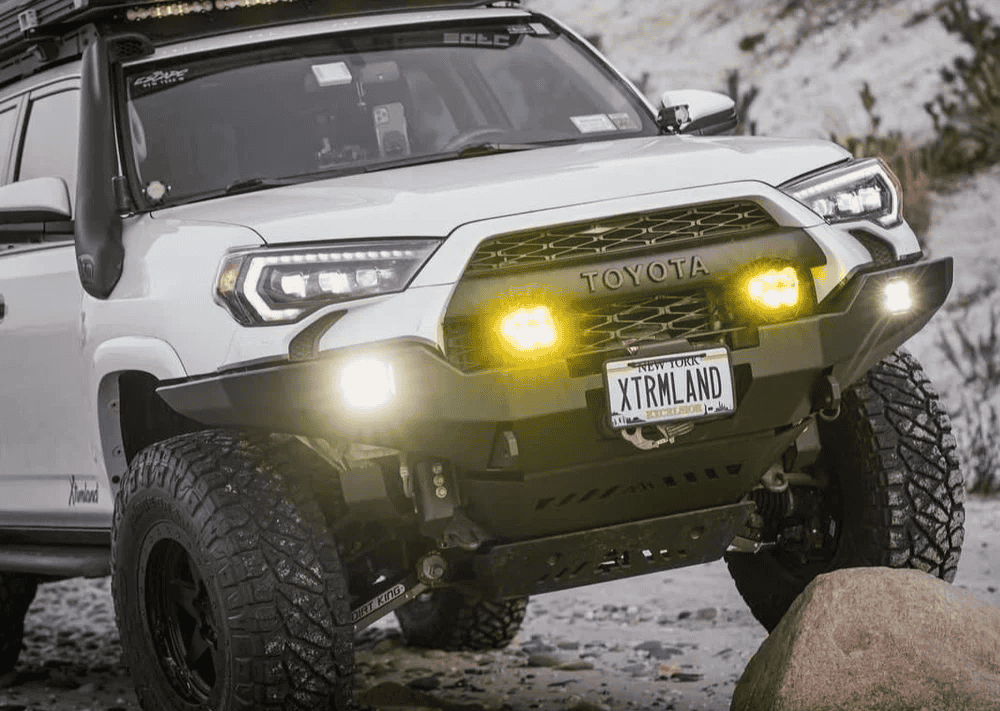Overland Vehicles

An expandable expedition build is a mobile platform that grows its usable space at camp without compromising trail manners on the move. Expansion may appear as pop up roof sections for headroom, slide out galley or gear pods, fold out sleeping decks, or modular walls that zipper and clip into rigid frames. The goal is simple space where you need it and silence where you do not. The hard part is harmony between motion, structure, and environment so the rig remains quiet, watertight, dust tight, and easy to deploy with cold hands in the dark.
Every expansion adds surface area that can flex, rattle, or leak. Use simple geometry, few moving parts, and serviceable hardware. Weight should sit between the axles and below window height when possible. If an expansion fails, the system should still close and secure for travel. Think like a field tech with a multitool and a spare bolt bag. If you cannot fix it on a gravel turnout, it is too complex.
A solid expandable expedition build pairs shelter with dependable systems. Power starts with roof or hood mounted solar feeding a battery bank sized by real loads, not wish lists. Fridge draw, fans, lights, and charge rates should be measured and verified with a clamp meter and a shakedown weekend. Redundant charge inputs help when weather stalls solar, so a smart alternator path or a shore charger keeps the bank healthy. Wiring should be labeled, fused near the source, and protected in abrasion resistant loom.
Lithium iron phosphate batteries offer stable voltage, long cycle life, and fast charging. They need proper low temp protection and a battery management system that matches the charger profile. An inverter sized only for actual needs avoids phantom loss. Plan outlets where you work and rest to prevent cable clutter across walkways and slide paths.
Water storage and plumbing must travel low and inside the thermal envelope to prevent freeze issues. Use quick drains, food grade lines, and a pump you can access in minutes. Include a no power fallback like a gravity spigot or manual pump head. Heating can be diesel or gas fired with dedicated intake and exhaust runs that respect clearances for nearby slide assemblies. Ventilation matters as much as heat, so pair it with controlled fresh air paths.
Structure is the quiet hero. Aluminum or steel frames support moving sections, with bushings and glide strips to stop metal on metal wear. Seal selection should match climate range. Use bulb seals and compression locks along the motion path so closing pressure is even. Dust is relentless, so design with overlapping lips, drip edges, and clear drain routes. After the first thousand miles, fasteners settle. Specify service intervals and torque specs so the rig stays tight.
Start with the mission. How many travelers, which seasons, what terrain, and how long between resupply. Map storage zones for food, tools, recovery gear, and soft goods. Sketch interior moves for cook, sleep, and work. Then check payload math. Many base platforms hit their limits fast once you add armor, tires, water, and energy storage. Choose a chassis that leaves margin for expansions and still stops and steers like stock under load.
Consider deployment time. A camp that takes two minutes invites more sunsets and fewer fiddly steps in the rain. Practice stow and deploy with gloves. Note how wind, cold, and darkness affect each motion. Write down any step that feels risky or slow, and tune it before a long route. Test everything locally, then graduate to a multi day shakedown where you log energy use, water use, and failure points. After the trip, refine seals, relocate switches, and slim the gear list.
If you want professional guidance on chassis selection, power architecture, and expansion hardware that survives washboard, explore our overland rigs. For tailored fabrication and integrated layouts built around your trip plan, review our custom overland upfit. To understand how we approach design, testing, and client support from kickoff to handoff, see Why choose OZK Customs.
A dependable expandable expedition build is a conversation between space and motion. If your sketch calls for a quiet cabin that opens wide at camp, OZK can translate that idea into a balanced platform with clean power, smart storage, and fast deployment. Share your route, your crew, and your non negotiables, and we will turn them into a map, a parts list, and a field tested build plan.
Ready to turn your concept into an expedition ready platform that expands where it matters and holds up on rough tracks. Tap our design team to translate your mission profile into a balanced plan, then let our fabricators build and test it. Share a few details and we will map your path from sketch to shakedown.
ADDRESS:
6159 E Huntsville Rd, Fayetteville, AR 72701
PHONE:
(479) 326-9200
EMAIL:
info@ozkvans.com